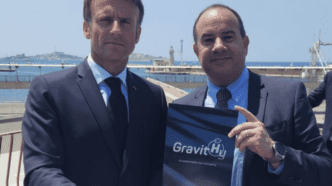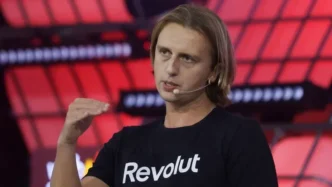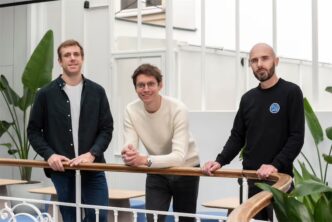French cleantech startup GravitHy is leading Europe’s push to decarbonize the steel industry with its innovative low-carbon iron production. Backed by the European Commission’s Clean Industrial Deal and Steel & Metals Transition Plan, GravitHy’s mission aligns with Europe’s vision of industrial sovereignty and climate leadership.
GravitHy has just secured €60 million in funding to support its expansion. The new investment round brings together global heavyweights like the Japan Hydrogen Fund (managed by Advantage Partners), Marcegaglia, Ecolab, Rio Tinto, and Siemens. Existing shareholders Engie New Ventures and InnoEnergy also reinvested. This diverse investor group signals growing international interest in decarbonizing steel production. And strengthens Euro-Japan collaboration through the Japan Hydrogen Fund’s network.
The fresh capital will help GravitHy move toward a final investment decision by 2026. The company plans to accelerate key engineering work, secure major contracts, obtain regulatory permits, and expand its team. Talks with potential investors are also ongoing to support the company’s long-term growth.
Founded in 2022 by a consortium of industrial leaders, including EIT InnoEnergy, Engie, FORVIA, GROUPE IDEC, Plug, and Primetals Technologies. GravitHy is focused on cutting emissions from one of the world’s most carbon-intensive sectors—steel production.
GravitHy’s approach relies on renewable and low-carbon hydrogen to produce Direct Reduced Iron (DRI) and Hot-Briquetted Iron (HBI). These low-carbon metallics will serve as critical feedstock for steelmakers aiming to produce green steel without building costly hydrogen production infrastructure themselves.
Unlike competitors H2 Green Steel, HYBRIT, and SSAB, GravitHy differentiates itself by specializing in low-carbon DRI/HBI production rather than integrated steelmaking. This flexibility positions the company as a key player in the emerging global market for low-carbon iron, which will reshape international trade flows.
GravitHy’s flagship plant, slated for Fos-sur-Mer, France, is set to become operational by 2028. The facility represents a €2.2 billion investment and will create up to 500 direct jobs. Built on a 75-hectare site, the plant will produce 2 million tons of DRI/HBI annually—equivalent to one Eiffel Tower of output each day.
Crucially, the site will feature a 750 MW electrolyser, the largest in France and one of the largest worldwide. Powered by green and low-carbon hydrogen, the plant aims to cut CO₂ emissions by up to 90% compared to traditional coke-based ironmaking.
“Collaboration is key to disrupting the steel value chain,” said GravitHy CEO José Noldin. “Our new partners share our vision for a resilient, decarbonized, and sovereign European steel industry. This funding accelerates our project, creating jobs and driving technological progress.”
Globally, the iron and steel sector accounts for 8% of carbon emissions, making it a critical target for net-zero efforts. Conventional ironmaking generates over 80% of total CO₂ emissions in the steel production process. GravitHy’s low-carbon DRI/HBI offers steelmakers an efficient way to reduce emissions without overhauling their entire production systems.
Support from global players like Rio Tinto, Siemens, and Ecolab bolsters GravitHy’s credibility. In addition, GravitHy’s selection for France 2030 underscores government backing for green industrial projects.
Diego Pavia, CEO of InnoEnergy, called the funding a major milestone. “Securing strategic investors ensures demand for GravitHy’s low-carbon iron. This momentum highlights green industrial projects as drivers of Europe’s economic growth and decarbonization.”
Keiichi Suzuki, Partner at Japan Hydrogen Fund, echoed the enthusiasm: “We’re proud to back GravitHy, supporting one of Europe’s most significant green steel projects. This partnership strengthens Euro-Japan collaboration, driving decarbonization in hard-to-abate sectors.”
With global demand for low-carbon steel rising and strong policy frameworks in place, GravitHy is well-positioned to become a European leader in green steel production. Its technology could reshape the global steel supply chain and make low-carbon metallics a mainstream commodity.













